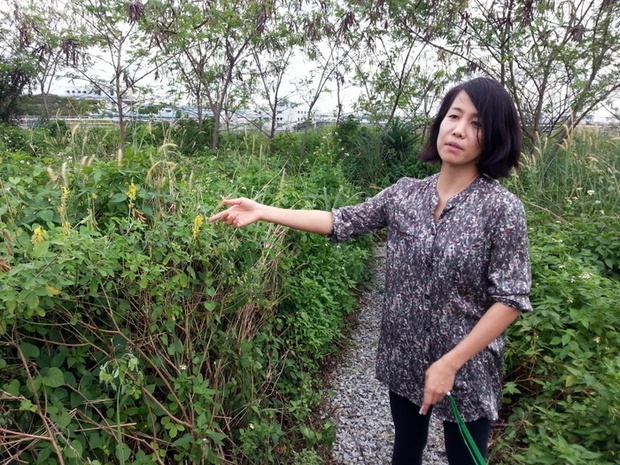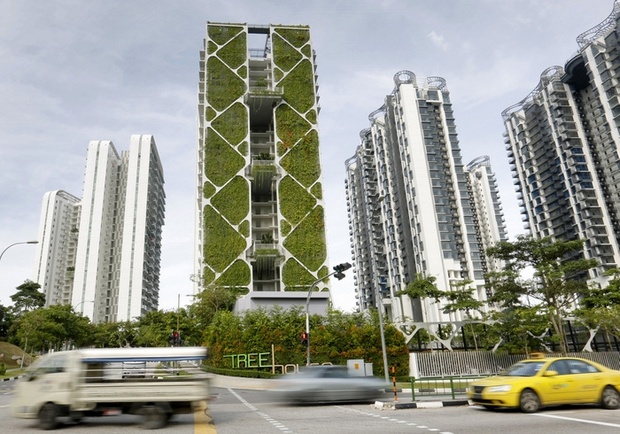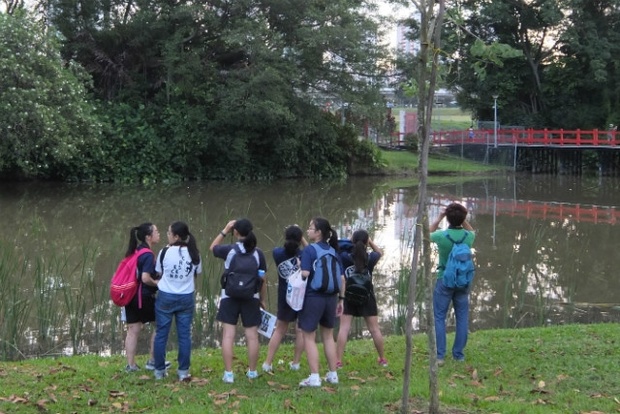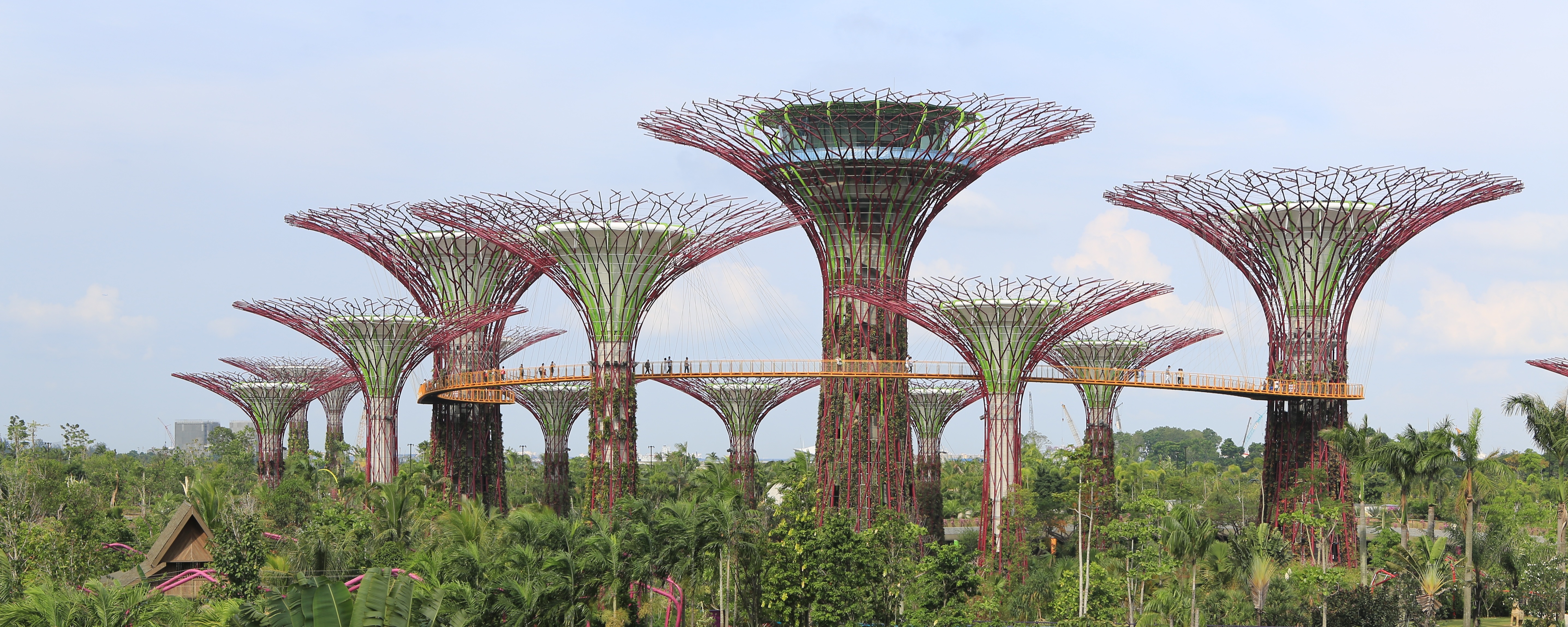Inside a city that works hard at keeping the jungle in “urban jungle.”

When it comes to discovering plant and animal species, this densely packed metropolis of more than 5 million people is full of surprises.
A year ago, a slender woody tree known as Alangium ridleyi, which was believed to have been lost to development, was discovered hiding in plain sight in the middle of Singapore’s heavily visited Botanic Gardens. (A dry spell triggered the tree to put out its small and delicate yellow flowers.)
Then in May, researchers found a species of shrub brand-new to science called Hanguana neglecta, a shin-high spray of blade-like leaves. It was spotted right beside a footpath in a nature reserve.
And Singapore’s last remaining patch of swamp forest, where mineral-rich, tea-brown water flows through small streams, was found to harbour a strangler fig thought to be locally extinct. Also found was a mud-snake species not recorded in Singapore before.
From our partners:
The discoveries not only delighted biologists here. They also captured the imaginations of city dwellers who were fascinated to find amidst their “urban jungle” new signs of actual jungle.
It didn’t happen by mistake. Singapore may take biodiversity more seriously than any other city in the world. And while a tropical location gives it something of a biological advantage, the city works hard at establishing connections between built-up urban environments and nature. Add up the forest preserves, undeveloped scrublands and the manicured street trees in developed areas, and half of Singapore’s 716 square kilometres (276 square miles) is under some sort of green cover.
And the city-state’s leaders want more. They think fostering a host of plant, animal and even marine life is not only a key part of Singapore’s natural and national heritage, but also makes the city more livable and attractive to global firms looking for a place to set up shop.

“Singapore has done more to conserve our natural heritage than a nation our size might be expected to do,” Minister of State for National Development Desmond Lee said last July. At the time, he was announcing the launch of Singapore’s first marine park, a 40-hectare (100 acre) area encompassing the land and waters surrounding a pair of small islands known as Sisters’ Islands and some nearby reefs. Boat trips, guided walks and underwater dives are planned.
Singapore’s decision to set aside land for nature reserves and parks — even while intensifying land use elsewhere — is a conscious choice, he said, “one which is never easy, especially when you consider the competing uses for housing, industry, defence and transport infrastructure. We consciously do so for the benefit of all Singaporeans, because a connection to nature is a must-have, not a good-to-have.”
An index for the world’s cities
First on the list of Singapore’s innovations in this area is something called the City Biodiversity Index, commonly known as the Singapore Index. It’s a set of indicators to measure and rate how cities are increasing their native plant, animal, and other species; protecting habitats from development and fragmentation; and involving municipal agencies, local companies, schools and the public in biodiversity-awareness programs, among other things.
The index dates back to 2008. At a conference of the parties to the international Convention on Biological Diversity, Singapore’s then-minister for national development, Mah Bow Tan, suggested a biodiversity index specifically for cities. At the time, few environmental indices had much of a biodiversity component, and none looked just at cities. The suggestion was taken up by the international convention, whose parties formally endorsed the index in 2010.

“People were beginning to realise that biodiversity doesn’t exist only in protected areas,” says Lena Chan, director of the National Biodiversity Centre at Singapore’s National Parks Board, or NParks, which manages nature reserves, parks and street-side planting. “It’s good if you actually safeguard it in protected areas, but biodiversity conservation has to be applied in a broader landscape.”
Even then, Singapore was rediscovering species thought to be lost. Through research surveys, Singapore was taking new steps to systematically catalog and protect wildlife. The idea for the index was that rating cities on their biodiversity efforts might spur some friendly rivalry among them. It would encourage the island-state and other cities to swap ideas on how to give wildlife a boost.
It’s working. The Singapore Index is used by 80 cities around the world, from chilly Edmonton, Canada to subtropical Curitiba, Brazil. It allows cities to benchmark their progress toward protecting biodiversity. It also gives them a tool to close management gaps and work out their conservation priorities.
“For the last 20 years, we have been looking at biodiversity, so we had a lot of data on that,” says Machteld Gryseels, a director in the City of Brussels’ environment department, Belgium. But using the Singapore Index “showed we lacked precise data on how many programs and visits to nature areas that we have.”
An evolution of strategies
You could say that Singapore’s approach to nature got started in 1963, when then-Prime Minister Lee Kuan Yew planted a sapling in a traffic roundabout. It was the beginning of a tree-planting campaign that lined major avenues and quiet residential streets with thick green Rain and Angsana trees, as well as Mempats with their spectacular pink blooms.
Then, the strategy was mostly about aesthetics. Lee argued that creating a garden-city image would convince visitors and investors that Singapore, emerging from colonial rule, was a well-governed place subject to the rule of law. Planting trees island-wide also countered an inequity of British rule, when only wealthy areas enjoyed gardens.
Singapore took some steps backward. In 1986, a major highway was built between two nature reserves, despite an outcry from researchers and nature groups. The highway caused a phenomenon known as habitat fragmentation, which happens when natural areas are cut up by roads or blocked off by buildings, harming species that range far and wide to feed and breed.
But planners came around. Today, Singapore has a deliberate strategy to restore connections: In 2009, planners began re-linking the two nature reserves with a large forested bridge over that highway. Two years ago, another effort began cultivating “nature ways” — strips of native vegetation along roadsides or canals that enable the movement of birds and butterflies. Recent surveys of these plantings found that forest-edge species like the Horsfield’s Baron Butterfly and the Common Gliding Lizard were present where they were not commonly seen before.

Today, Singapore is also using geographic information systems, genetics and other technologies to map the best thoroughfares for specific species, from birds to coral larvae. For example, research models suggest that the currents around Sisters’ Islands make for a good source for coral larvae to be dispersed through local waters. That’s a big reason why Singapore sited its new marine park there.
Increasingly, Singapore is looking to integrate nature into its very skyline. NParks helps fund the cost of installing green roofs and walls to temper air quality and insulate high-rise buildings from harsh tropical heat. Experts suggest Singapore is in a unique position to do research on these types of solutions and show other cities what works. As urban sustainability expert Peter Newman of Australia’s Curtin University says, “I think that we need a city like Singapore to show some scientific leadership by seeing how the new structures created around high-rise buildings provide opportunities for biodiversity that cannot be created by the normal landscape between buildings.”
Lots of research is going on. Today, National University of Singapore landscape architect Hwang Yun Hye is studying whether leaving strips of greenery less-managed can lead to richer biodiversity on those patches while also cutting maintenance costs. “It’s not just letting it grow,” she says, “but a different style of maintenance and management.”
You can’t save what you don’t measure
Another thing Singapore puts a lot of effort into is wildlife surveys — that’s one reason for all the recent species discoveries. Surveys are the clearest way to collect some of the data required by the Singapore Index.
In colonial times, amateur naturalists made Singapore’s tropical forests some of the most heavily-collected in the world. After independence, when the island was more focused on city-building, nature surveys fell off the radar. A comeback came in the early 1990s with the first survey of two major nature reserves. One of them had been set up primarily to serve as a water catchment area to help Singapore wean itself off water imports. The survey discovered that a number of forest species had regenerated and taken root.

In 2010, Singapore began a comprehensive survey of its marine life, after civil-society groups had pushed for one as part of a marine conservation plan. To date, the survey has found dozens of species possibly new to science, such as a distinctive red-lipped anemone and an orange-clawed mangrove crab. That’s on top of the more than 250 hard corals — a third of the world’s species — that call the port city’s waters home.
An important recent development in Singapore’s strategy is to involve the public and companies in some of its surveys. For example, NParks invited volunteers to participate in a recent island-wide survey of herons — birds whose presence is an indicator of water quality and environmental health. Wong Tuan Wah, conservation director for NParks, says the baseline data from volunteers helps guide habitat-enhancement schemes.
On a cool Sunday morning recently, more than 100 volunteers fanned out across the island to spot and count the big birds.
Volunteer Ricky Seah, 62, was one of them. He first did a Heron Watch survey with his firm as part of its corporate volunteer schemes in 2014. This year, he came back of his own accord to volunteer to count birds at Jurong Park, a large public park near his home. He’s counted a whole tree full of grey herons, a common species. Participating in the survey gives him a connection to nature that he enjoys, he says. “And it gives me a reason to get out early and get some exercise and fresh air.”
Singapore’s tight quarters will always put pressure on wild spaces. Creating gradual buffers between wild areas and urban ones is key, says Shawn Lum, ecologist at Singapore’s National Institute of Education and president of the Nature Society. But there’s not always space for buffers in a tightly packed city like Singapore. On the other hand, Lum says, well-planned urbanisation can be an effective strategy for saving biodiversity.
“By deciding to build upwards, we were able to keep the green spaces,” he says. “The question is how you transform that into a policy for long-term management.”
“For me at least, biodiversity is part of our heritage,” Lum says. “From a cultural, ethical or moral perspective, I think we have a duty to learn to live with it and manage it.”
This article is from CityLab.













